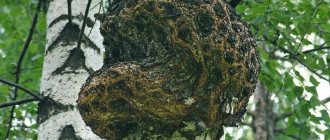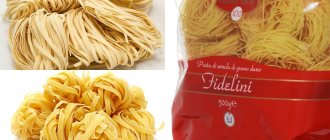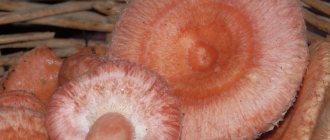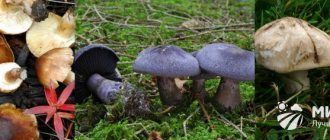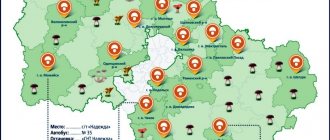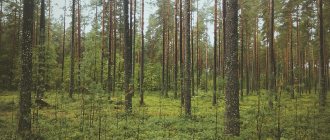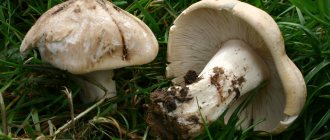Specific nutrition of saprotrophic bacteria
Nutrition is the process of storing energy and nutrients. For normal existence, bacteria require a number of nutrients, such as:
- nitrogen (in the form of amino acids);
- proteins;
- carbohydrates;
- vitamins;
- nucleotides;
- peptides.
In laboratory conditions, for the propagation of saprophytes, autolysate from yeast, whey from milk, meat hydrolysates, and some plant extracts are used as nutrient media.
An indicative process of the presence of saprophytes in products is the formation of rot. The danger comes from the waste products of these microorganisms, as they are quite toxic. Saprophytes are a kind of orderlies in the environment.
The main representatives of saprophytes:
- Pseudomonas aeruginosa (Pseudomonas);
- Escherichia coli (Proteus, Escherichia);
- Morganella;
- Klebsiella;
- Bacillus;
- Clostridia (Clostridium);
- some types of mushrooms (Penicilum, etc.)
It is possible to defeat parasites!
Antiparasitic Complex® - Reliable and safe removal of parasites in 21 days!
- The composition includes only natural ingredients;
- Does not cause side effects;
- Absolutely safe;
- Protects the liver, heart, lungs, stomach, skin from parasites;
- Removes waste products of parasites from the body.
- Effectively destroys most types of helminths in 21 days.
There is now a preferential program for free packaging. Read expert opinion.
Read further:
Pathogenic bacilli: Proteus, Escherichia, Klebsiella, Pseudomonas aeruginosa
Conditionally pathogenic microorganisms in men and women: names and photos
Clostridium perfringens: description, biological properties, symptoms
Pathogenic Salmonella: Salmonella pathogens
Pathogenic clostridia: general properties, type of bacterial respiration
Human pathogenic microorganisms in the environment: destruction factors
Physiological processes of saprotrophic bacteria
Among these microorganisms are:
As an effective medicine against parasites, doctors advise taking the drug “Gelminton”. The composition of the product is based only on natural ingredients of natural origin, they were grown in places with 100% clean ecology, and have a proven effect that allows you to quickly deal with any type of worms.
- anaerobes (Escherichia coli, it can live in an oxygen-containing environment, but all life processes take place without the participation of oxygen);
- aerobes (putrefactive bacteria that use oxygen in their life processes);
- spore-forming bacteria (genus Clostridia);
- non-spore-forming microorganisms (Escherichia coli and Pseudomonas aeruginosa).
Almost the entire variety of saprophytes, as a result of their vital activity, produces various cadaveric poisons, hydrogen sulfide, and cyclic aromatic compounds (for example, indole). The most dangerous to humans are hydrogen sulfide, thiol and dimethyl sulfoxide, which can lead to severe poisoning and even death.
Saprotrophs take their part in the process of decay.
Blue-green algae
These cyanobacteria are involved in the production of oxygen. Scientists believe that it was these ancient microorganisms that began to form the Earth’s atmosphere several billion years ago. After all, at that time there were no trees or other plants that released oxygen during photosynthesis. But bacteria existed. Even now - due to their large numbers - their share in the production of this gas is significant.
Where does dust allergy come from?
Allergies are a result of constant sterilization. People's homes are becoming more and more comfortable - sealed plastic windows, air conditioners, water filters, dishwashers - contribute to the emergence of pathogenic microflora. Synthetic building materials, chemical household detergents, fermented (processed) foods, etc., gradually lead to the accumulation of harmful substances (toxins) in the body and weaken the immune system - the natural protective function of the body. Therefore, as a result, various types of intolerances (all kinds of allergies) appear.
Tick allergy in children can also be provoked by an untreated chronic inflammatory process in the bronchi, which is sometimes confused with bronchial asthma, for which a completely different treatment is prescribed.
(animals and protists) decomposers differ primarily in that they do not leave solid undigested residues (excrement). In ecology, detritivorous animals are traditionally classified as consumers (see, for example, Bigon, Harper, Townsend, 1989). At the same time, all organisms emit carbon dioxide and water, and often other inorganic (ammonia) or simple organic (urea) molecules and thus take part in the destruction (destruction) of organic matter.
nutrition
Saprophytes can be divided into two groups:
Forced saprophytes that obtain their nutrients exclusively through the decomposition of organic matter without life. The other group includes those organisms that are saprophytic only during their life stage and become facultative.
Saprophytes feed by a process called absorptive nutrition. In this case, the nutrient substrate is digested due to the action of enzymes secreted by fungi, bacteria or mold. These enzymes are responsible for converting detritus into simpler molecules.
This nutrition, also known as osmotrof, occurs in several stages. Firstly, saprophytes secrete some hydrolytic enzymes that are responsible for the hydrolysis of large detritus molecules such as polysaccharides, proteins and lipids.
These molecules are divided into smaller ones. As a product of this process, soluble biomolecules are released. They are absorbed due to different concentration gradients of these elements at the extracellular and cytoplasmic levels.
After crossing the semipermeable membrane, the substances reach the cytoplasm. Thus, the saprophyte cells can be nourished, thereby ensuring their growth and development.
Adaptations in fungi
Fungi have tube-like structures called hyphae. They are formed by elongated cells, covered with a chitin cell wall and turn into a micelle.
The fibers develop by branching between the layer where it is located. There they secrete enzymes, including cellulase, and absorb nutrients from decomposition products.
Soil nurses - earthworms
Earthworms live in the upper layer of soil, and with their participation the lion's share of decomposition and humification of plant residues occurs. The number in nature reaches 30-300 individuals per square meter. The worm continuously passes through the intestines a substrate consisting of rotting remains, microorganisms and inorganic particles, and after digestion, excretes excrement ( coprolites ) enriched with beneficial bacteria, minerals and nutrients.
Worm courses improve aeration and drainage of the soil, which is important not only for plants, but also in order to provide the decomposing substrate with the necessary moisture and oxygen. These tiny orderlies of the earth process tons of plant waste every year.
Man has learned to breed worms in artificial conditions in order to utilize plant waste and obtain natural fertilizer for agriculture - vermicompost . Several hybrid breeds have been bred that are superior to their wild relatives in many respects (productivity, reproduction frequency, omnivorousness, life expectancy).
The best breeding vermiculture for the Russian climate is the unpretentious and tenacious worm Prospector . Our company is engaged in breeding and selling a pure line of these worms. We invite everyone who wishes to purchase Prospector's breeding stock to create their own worm farm. Detailed information about our products (and vermiculture in general) is available on this website.
Saprophytic bacteria
Bacteria are such small organisms that they can only be examined with the most powerful microscopes, magnifying hundreds of times. And although in ordinary life a person is not given the opportunity to see them, he has to deal with the results of their activities every day. Thus, thanks to them, the existence of fermented milk products and wine is possible. And while some bacteria cause infectious diseases, others are of great benefit to humans.
Among them are, for example, some E. coli and bifidobacteria that live in the human digestive tract. They help the body absorb nutrients and fight pathogenic flora.
Definition
The word itself is borrowed from another language, more precisely, it is combined from two Greek words: sapros - “rotten” and phyton - “plant”. In biology, saprophytes are fungi, plants and bacteria that consume dead tissues of animals and plants as food, as well as products released by them during their vital activity. They are distributed everywhere - in water, land, air, and also in the bodies of living beings.
Most often, saprophytes are individuals that do not harm their owner. A person does not even realize what a huge number of different microorganisms are constantly on his skin and inside the body, without causing any diseases. However, under the influence of negative factors (decreased immunity, excessive increase in the number of microbes), everything can change, and saprophytes can cause an infectious disease.
The role of saprophages in nature
The term "saprophage" consists of two Greek words:
- sapros – rotten;
- phagos – devourer.
These are organisms that feed on dead organic matter. The group includes a wide variety of fauna:
- some of the mammals, such as hyenas;
- birds (vultures);
- insects (ants, beetles);
- microorganisms (bacteria, fungi) and so on.
The function of saprophages in nature is invaluable:
- cleansing the ecosystem (processing plant litter, rotting wood, remains and feces of other animals, etc.);
- neutralization of toxic substances;
- control over the number of pathogenic flora and diseases, etc.
Soil saprophages are the main creators of the fertile layer of the earth, as they participate in humus formation and mineralization, mix and loosen the soil, process decomposing waste, and actively influence the biochemical and physical parameters of soils.
Living organisms related to saprophytes
Saprophytes are bacteria and microorganisms that feed on the remains of animals and plants. Being lower beings, almost all microorganisms are safe for humans. But there are also those that can cause harm, for example, dust mites. This inhabitant lives on any surface and feeds on dust. Another example of harmful bacteria is E. coli, which causes severe pathologies when it enters a living organism. By causing an infectious disease, the bacillus can provoke pneumonia, meningitis, sepsis - diseases with a high risk of death.
Important! The habitat of protozoan species is dead carcasses of cattle and other animals. Even though organisms do not feed on living tissue, the food must still be organic in nature
Microorganisms never settle in chemicals and other substances - this environment is destructive for them. That is why preventive measures against ticks and E. coli include hand washing and wet cleaning using soap solutions.
The life cycle of organisms is not complex. In the process of symbiosis, a viable individual is formed, capable of further reproduction by spores.
Parasitic life forms
Parasites are lower class creatures of plant or animal origin. The concept itself is translated as “freeloader,” which fully reflects the essence of parasitic organisms. Examples of human parasites:
- worms (helminths);
- simple/complex viruses;
- fungi (candida).
Organisms can survive only at the expense of the host, feeding on the tissues of a living creature or plant. The habitat is chosen inside or outside the host: foliage, fruits, dermis, internal organs, mucous membrane. Almost all types of microorganisms are dangerous to humans. Viruses threaten life, helminths poison the body with toxic secretions, fungus destroys microflora and causes necrosis. In some cases, lack of medical care leads to death.
Symptoms of Plasmodium falciparum and what it is
The life cycle of any species is almost always multi-stage; this is the difference between saprophytes and parasites. The latter have many intermediate stages of reformation. For example, helminths require an initial development environment (aquatic), then an intermediate carrier, and only then a final host, in whose body the full maturity of the worm is achieved.
Fact! When infected with parasites, therapeutic treatment is always required. This can be a traditional method or medicinal or surgical intervention.
Similarities between saprophytes and parasitic bacteria
Since by their nature these species are quite difficult to distinguish, the following classification arose:
Facultative saprophytes
They can be called hemiparasites or conditional saprotrophs. This includes microorganisms that can exist without a nutrient medium containing living cells. In some cases they look like saprophytes, but in many ways they are parasites
They grow very poorly on nutrient media and occupy a very important place in nature.
Facultative parasites
They can be called conditional parasites or semi-saprophytes. This includes microorganisms that lead their lifestyle like saprotrophs. However, under different environmental conditions, they can settle on a living organism and lead their lifestyle like parasites.
Ecological function
Saprophytes play a very important role in the ecosystem; they are part of organisms that complete the natural cycle of matter. When they destroy organisms that have already completed their life cycle, they receive nutrients that are recycled, released and returned to the environment. There they are again available to other living beings.
Decomposed materials contain nutrients such as iron, calcium, potassium and phosphorus. This is the basis for plant growth.
The cell wall of plants is made of cellulose. This molecule is very difficult to process effectively by the vast majority of organisms. However, mushrooms possess a group of enzymes that allow them to digest such a complex structure.
The end product of this process is simple carbohydrate molecules. Carbon dioxide is released into the environment, where it is captured by plants as a major element in the process of photosynthesis.
Many of the components of living things can be broken down almost exclusively by saprophytes such as lignin. It is an organic polymer found in the supporting tissues of plants and some algae.
biotechnology
Acidophilus bacteria can tolerate high concentrations of some metals. Thiobacillus ferrooxidans has been used to detoxify metal ions in acidic waters of metal mines.
Secreted enzymes may be involved in the reduction of metal ions present in mine wastewater.
The bacterium Magnetospirillum Magnumum It produces magnetic minerals such as magnetite. They form sedimentary remains that indicate local environmental changes.
Archaeologists are using these biomaterials to establish the ecological history of the region.
How to increase the effectiveness of saprophytes ❓
Saprophytes are bacteria that reproduce by division every half hour under favorable conditions.
The components are indispensable for processing organic matter, freeing soil from pathogenic flora, heavy metals and chemical contaminants. The elements are necessary to free the environment from dangerous decay products. The resulting bacterial substrates contain improved nutrients and biofertilizers for vegetation. Therefore, the more saprophytes, the higher the efficiency of processing organic matter and industry.
Interferes with the reproduction process

